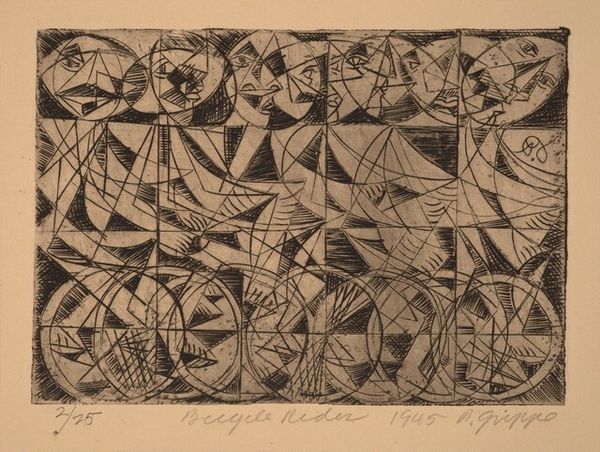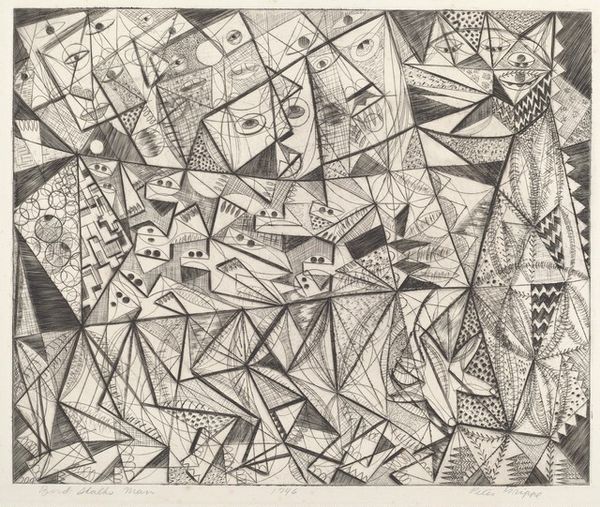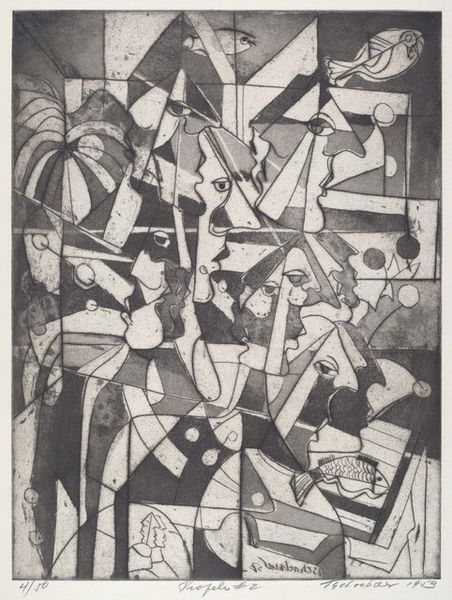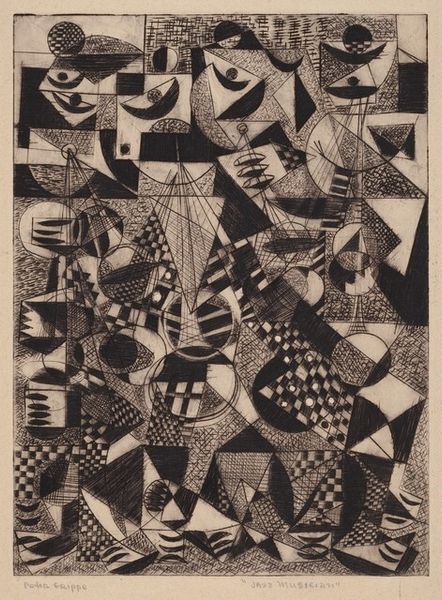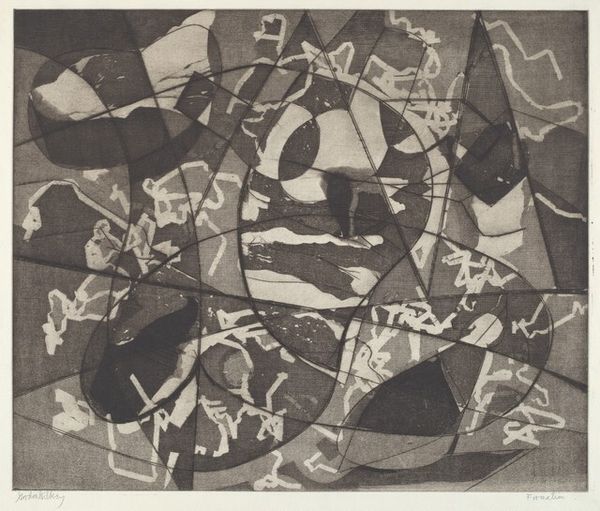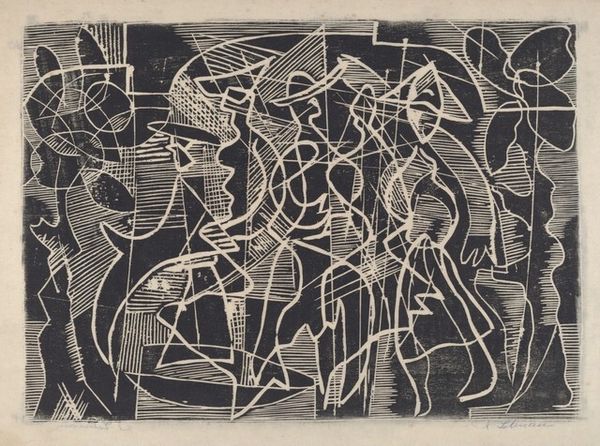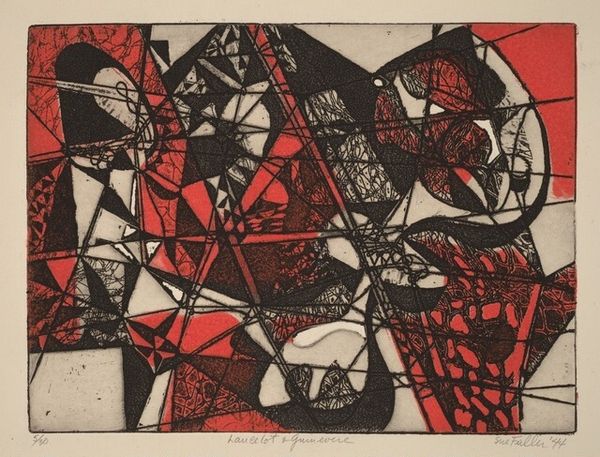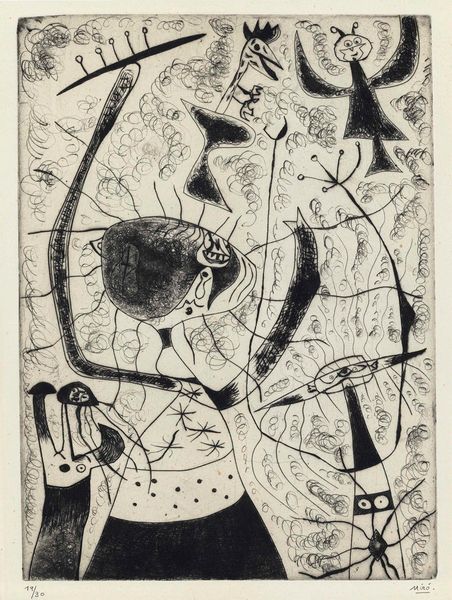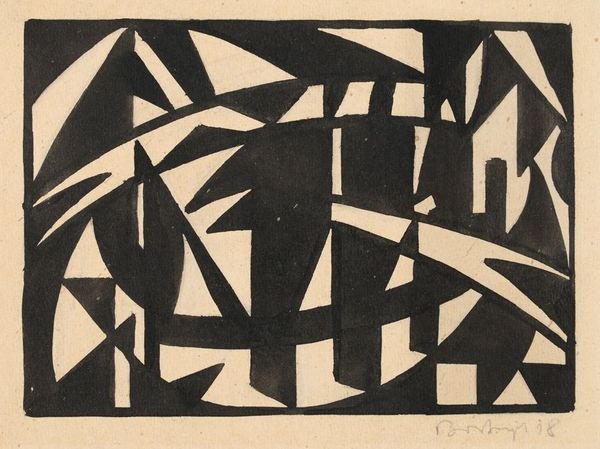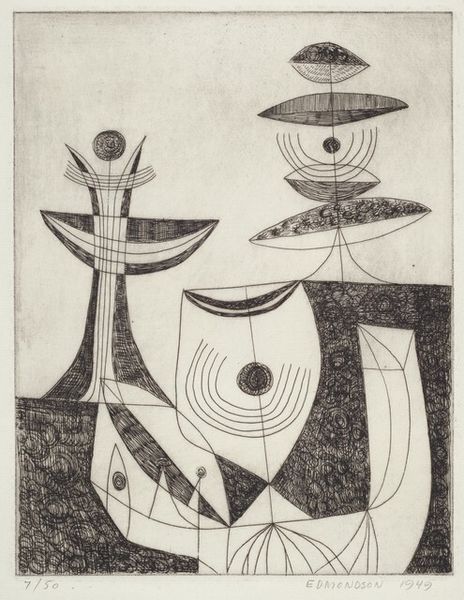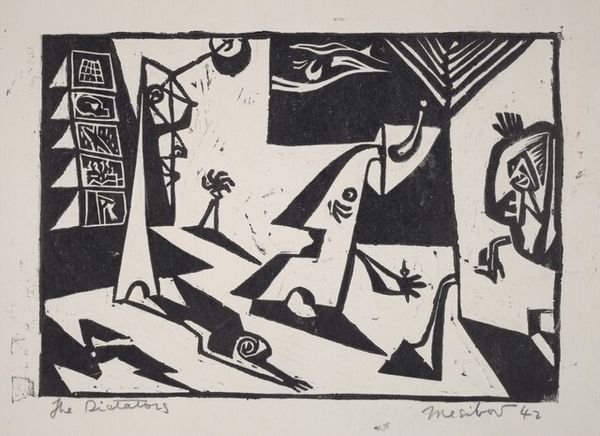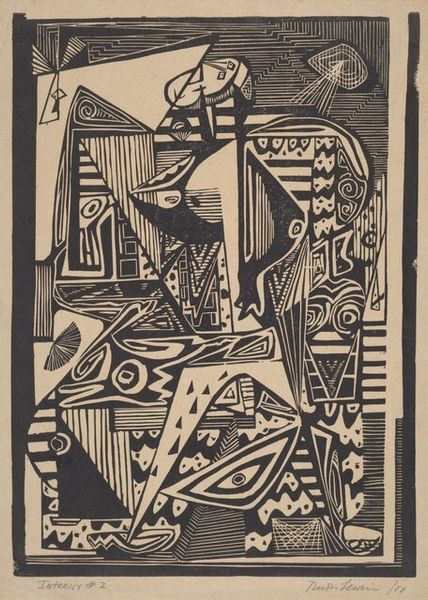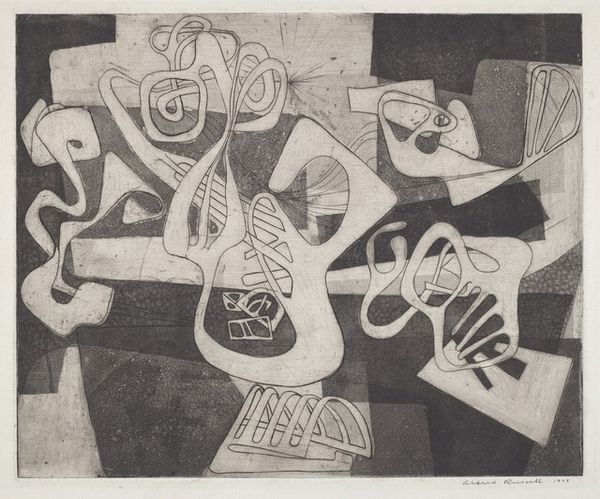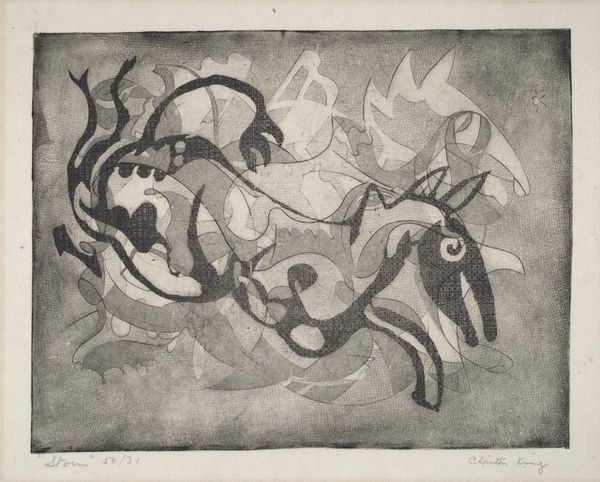
print, etching
#
abstract-expressionism
# print
#
etching
#
geometric
#
abstraction
#
line
#
modernism
Dimensions: Image: 103 x 150 mm Sheet: 186 x 232 mm
Copyright: National Gallery of Art: CC0 1.0
Editor: We're looking at Peter Grippe's 1945 etching, "Running Figure." It's a busy composition of geometric shapes and lines that only hint at figuration, it gives me a slightly unsettling, fragmented feeling. What strikes you most about this piece? Curator: For me, it's the materiality of the etching process itself. Look at the cross-hatching, the intentionality of the line weights, the visible signs of labor involved in creating the plate and pulling the print. This wasn't mass-produced; it was painstakingly made. It's not trying to hide its origins in production. What about the visible tool marks in the white space between the figures? Editor: That's interesting. So you’re saying the artist highlights the actual *making* of the work, not just the image itself? Curator: Precisely! This connects it to the broader social context. In 1945, with postwar realities setting in, there was a renewed interest in labor and tangible production. Grippe is challenging the separation between the intellectual act of creation and the physical act of making, even highlighting his tools used. He elevates what some might dismiss as "craft" to fine art, what would this mean for the concept of who makes art for whom? Editor: So, by focusing on the process, the physical labor, and the materials, we can connect this abstract image to broader social and historical themes. That gives the "fragmented feeling" a lot more meaning. Curator: Exactly. It's about acknowledging the hand, the maker, the process. In a way, Grippe democratizes art, making the means of production a central theme. Editor: I see now. Looking closely, it’s like the "Running Figure" is almost secondary to the process. It completely changes how you perceive the work. Curator: Indeed. Considering the social context alongside the materials offers a powerful new perspective.
Comments
No comments
Be the first to comment and join the conversation on the ultimate creative platform.
